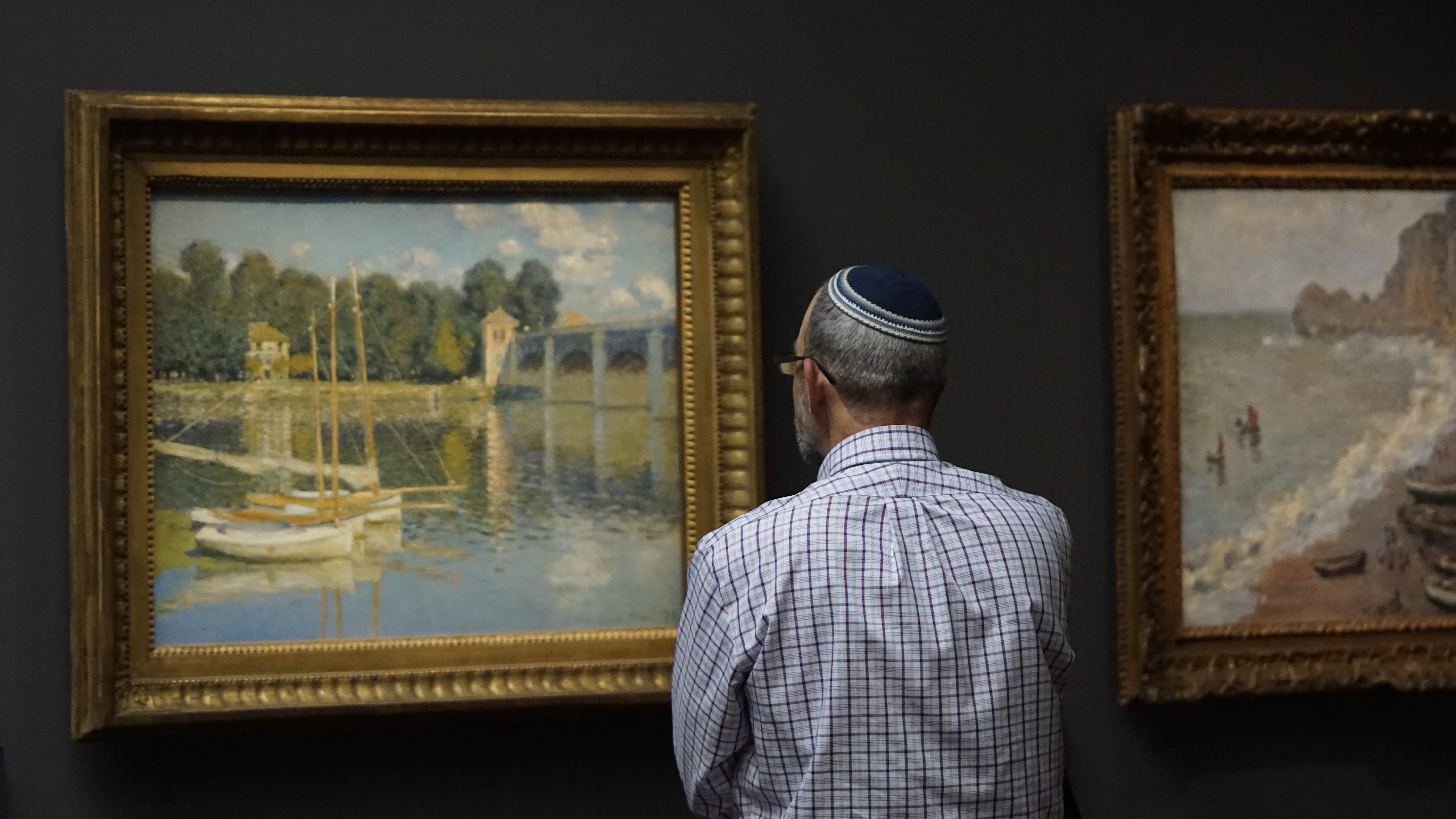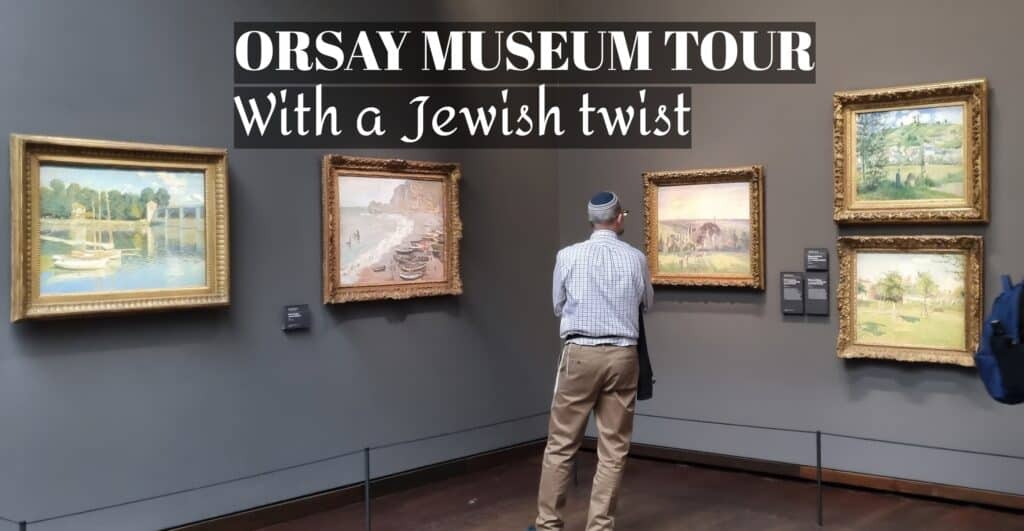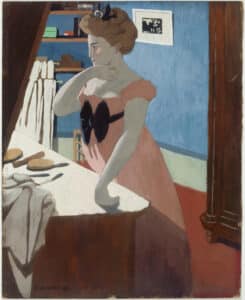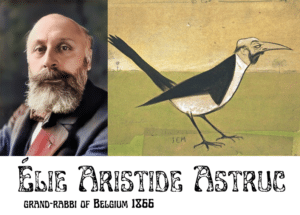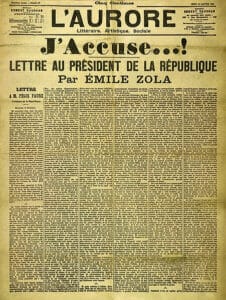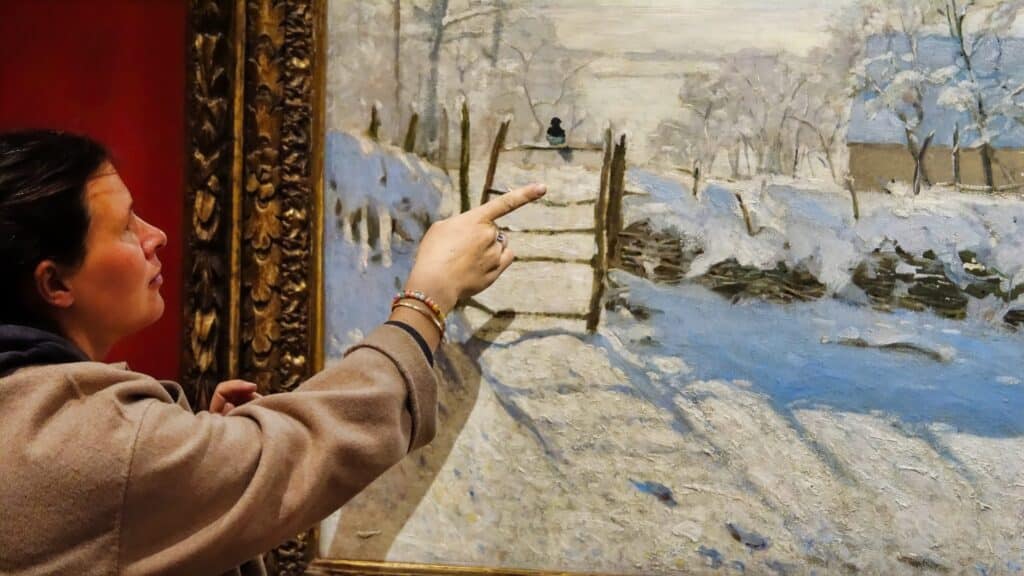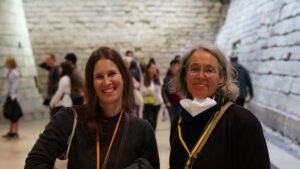The philosopher Emanuel Levinas once said that :
If a country is torn apart because of a simple man who happens to be a Jewish Captain, it is a country where one should go immediately.
He talked about France and the Dreyfus affair that finished with a victory for those who fought antisemitism.
Dreyfus was rehabilitated and the France re-consolidated.
The Dreyfus affair took place at the end of the 19th century.
It is true that France was the first country in the world to grant full citizenship to Jews. But, according to me, the Golden Age of the Jews in France was during the 19th century.
These are the times when French Jews flourished in many aspects of society like science, politics, business and art.
The 19th century was also the Industrial Revolution, Modernity, flourishing economy, development in many aspects of society.
This gave the opportunity to certain Jewish families to establish businesses. Jewish families opened banks, invested in railway companies, opened department stores, developed real estate.
And many of these families (see De Camondo Family) became interested in supporting artists and collecting art.
Musée D’Orsay with a Jewish Twist
The Musée d’Orsay is the museum of impressionism, expressionism and Nabi art. It concentrates on art from that same 19th century.
Every time I do a guided tour of the Musée D’Orsay, I am always struck but the huge amount of paintings that come from private collections that were once owned by Jewish businessmen and women.
Camondo, Kagonovitch, Meyer, so many names of Jewish families appear on the small signs under the exposed paintings that name their previous owners.
I also realized that many Jewish people were portrayed by painters.
The painters often painted portraits of their benefactors, and we see some of those in D’Orsay.
For instance, the painters Renoir, Toulouse Lautrec and Valloton made a portrait of Misia Nathanson.
Unfortunately, later in his life Renoir became very antisemitic, but in his early years he didn’t mind socializing with Jewish benefactors.
This made me become curious about who all these Jewish benefactors and socialites were.
How did the collectors become interested in art? What drove them to donate their collection to France instead of selling it or leaving it to their children?
Even after WW II, Jewish families continued to donate their art to France. And after the war French Jews returned serving the country, in politics, art, science and business.
So, they were not angry? They were not resentful after WW II and after what could be considered as a betrayal by the French government?
It certainly has to do with the fact that these Jews arrived and prospered in France in the 19th century.
There was a saying that explains it all: “being happy as a Jew in France “.
It also has to do with the fact that even though there has always been a lot of antisemitism in France, we need to remember that three quarters of the Jewish population in France was nót deported. They were most often protected by good French people who risked their lives to save Jews.
As I was exploring the history of the Jewish donators, I came across the realization that many of the Jewish families were intertwined in business, marriage, friendships or political opinions with other Jewish families of whom I found paintings in D’Orsay.
Indeed, they married each other, were friends or colleagues and ultimately influenced and inspired each other.
I learned so much that I decided to share my discoveries in the very special tour I designed especially for you:
The tour is called D’Orsay and its Jewish benefactors, or, D’Orsay with a Jewish twist.
Let me give you just a small example of how everything comes together when you look into the subject.
Most of you have visited or at least heard of the famous Nissim de Camondo museum. This private house in Paris that was once owned by Moses of Camondo became a museum with the most exquisite furniture from the 18th century.
Moses’s daughter, Fanny, married a young Jewish man from the Reinach family, another famous Jewish name in the 19th century.
Joseph Reinach was a politician, a writer and journalist who was a fervent defender of Dreyfus. Joseph also donated a famous painting of Van Gogh to France that is now in D’Orsay.
The tragic end of Fanny and her family during WW II makes the visit of the house even more impressive and emotional.
But did you know that Moses had a cousin, called Isaac ?
Isaac de Camondo was a banker, and like his cousin, mostly cared about art.
Isaac became a close friend of Monet and was actually the first to buy paintings of the famous series that Monet painted of the Cathedral of Rouen.
He established quite a collection and upon his death his collection was donated to the Louvre.
As D’Orsay did not exist yes, his paintings were first exposed in rooms in the Louvre that were named after him.
Isaac was a music lover and even composed some music of his own.
And through the music the Camondo family connected with yet another Jewish family.
Because of Isaac’s passion for music, he became friends with Gabriel Astruc.
Gabriel Astruc was the son of a very famous Belgium Rabbi.
Instead of following the footsteps of his father he became impresario for singers, piano players, ballet dancers and even performers like the scandalous Mata Hari.
He met the famous piano composer Eric Satie, who was discovered by his friend, the piano player Misia Nathanson.
And this is where I explored another Jewish family.
Misia was married to Thadée Nathanson. They were a flamboyant couple and all of Paris wanted to attend their parties.
Thadée was a publisher and during the Dreyfus affair chose the side of Dreyfus.
And one of their guests was the painter Vuillard, who painted them in their appartment.
The prophets of modern art.
Vuillard was part of the Nabi movement.
This was a group of French painters who considered themselves as “prophets of modern art.”
They were inspired by the impressionist and expressionist painters but looked ahead to modernity.
Nabi comes from Hebrew and means “prophet”.
When I guide you in D’Orsay I will certainly take you to an off the beaten track room, away from the crowds, where many of these Nabi painters are exposed.
And this is where I yet made another connection with a French Jewish family.
Because in the same room we will see paintings that come from the collection of Phillipe Meyer.
In 2000 and 2007, Phillipe Meyer, a French Jewish scientist and art collector discreetly donated an exceptional group of works of Cézanne, Manet, Bonnard and Vuillard to D’Orsay.
Phillipe Meyer was born in the 1920-s.
During WW II he and his family fled to the US but Phillipe came back to France and joined the resistance.
After the war he studied in the US and then returned to France.
He and his wife established one of the largest art collections ever in France.
Phillipe was quite the hero as you can see.
In these same rooms the Nabi and expressionist collection of Max Kaganovitch is exposed.
Max was a Russian born Jewish sculptor who had more success in trading art.
He owned an art gallery in Paris, not far from D’Orsay.
During WW II he fled to Switzerland to escape the Nazis and had great trouble to get his gallery back after the war.
And this brings us to the stolen paintings during WW II.
The Nazis stole many impressionist paintings from French museums and Jewish collectors.
You might have seen the movie “ The Monuments men”.
In this fantastic movie we learn how Rose Valland, a discreet civil servant who worked in the Jeu de Paume, then the impressionist museum in Paris, secretly kept lists of the stolen art.
When after the war the US army discovered the stolen art in Germany, she pulled out her list and most of the paintings found their way back to the museums and owners they once belonged to.
I have mentioned the Dreyfus affair several times in this article, that’s because I also designed a successful tour in Paris city about the Dreyfus Affair.
However, during my Jewish Orsay tour, I will make sure to show you the portrait Edouard Manet made of the journalist and writer Emile Zola.
Emile Zola supported Manet who was criticized for his work and vision by the establishment of the art world in France.
He also very courageously wrote the article “ J’accuse”, meaning “I accuse.”
In this article he accused the top generals in the French army of being antisemites and he defended Dreyfus.
This article very highly contributed in the rehabilitation of Dreyfus.
And this is where we can connect all the dots. The Jewish collectors, the Jewish families who donated their art to France, that they considered their beloved and cherished country.
Thanks to them D’Orsay has the most fabulous collection of art-work and I just can’t wait to bring you there and tell you all about the destiny of these exceptional people.
Contributors
I’m Flora Goldenberg, and I hold a Master’s degree in Art History. The Musée d’Orsay is among my very favorite museums in Paris.
My warm thanks go to Léontine Cohen, private guide in Paris and Jerusalem, for co-designing this tour with me.
